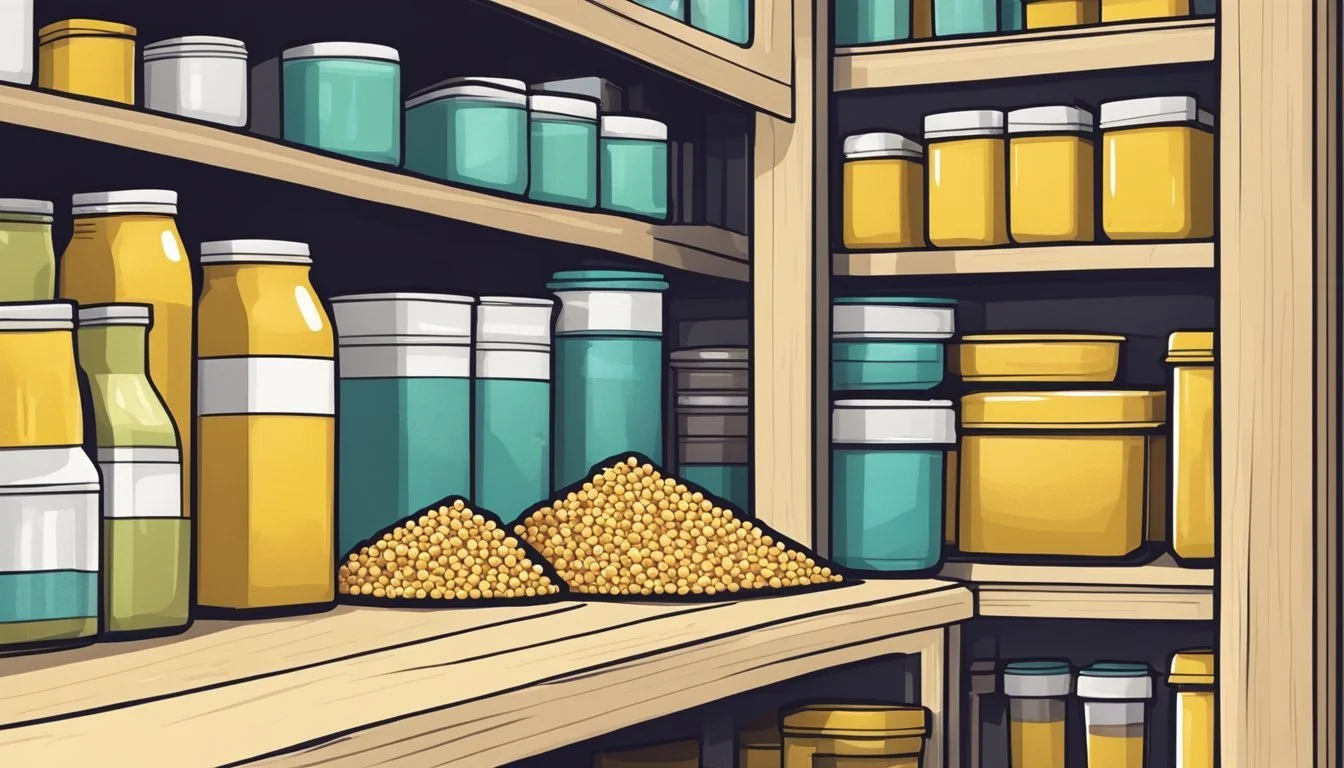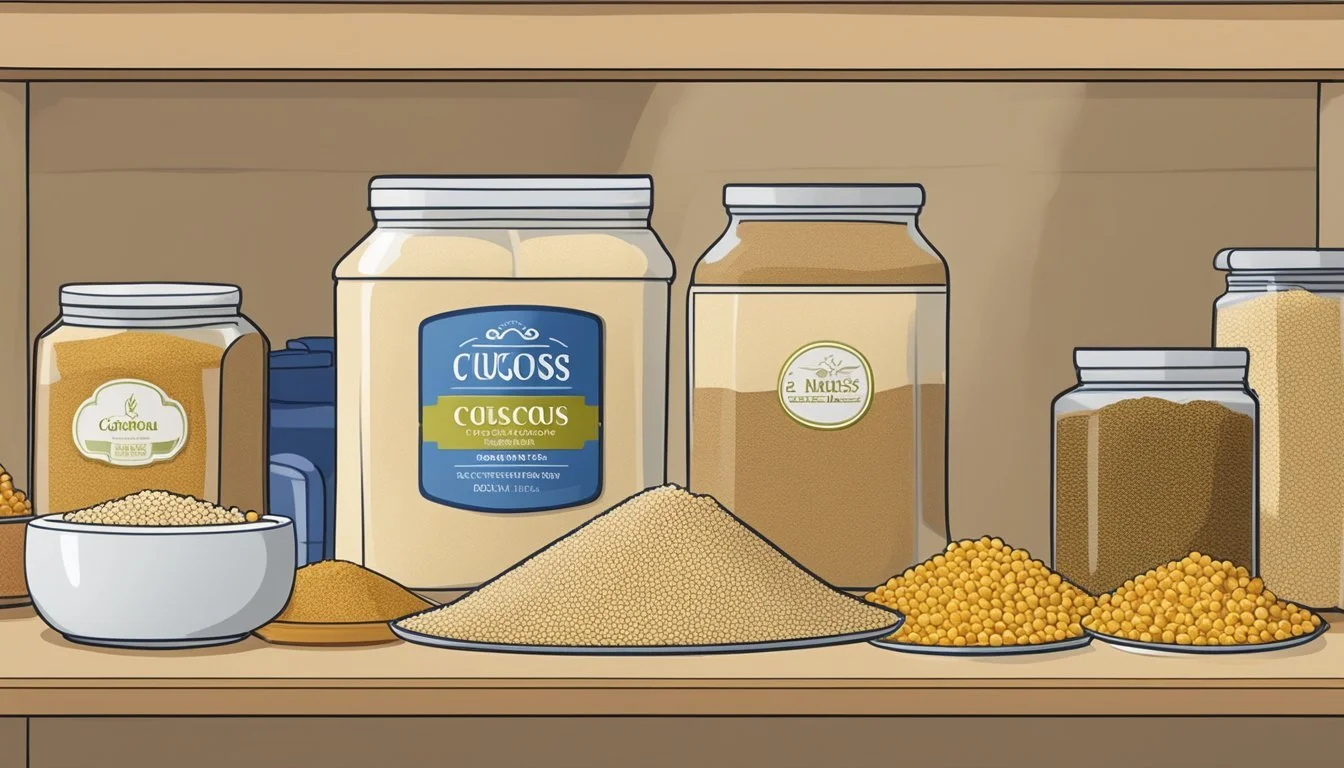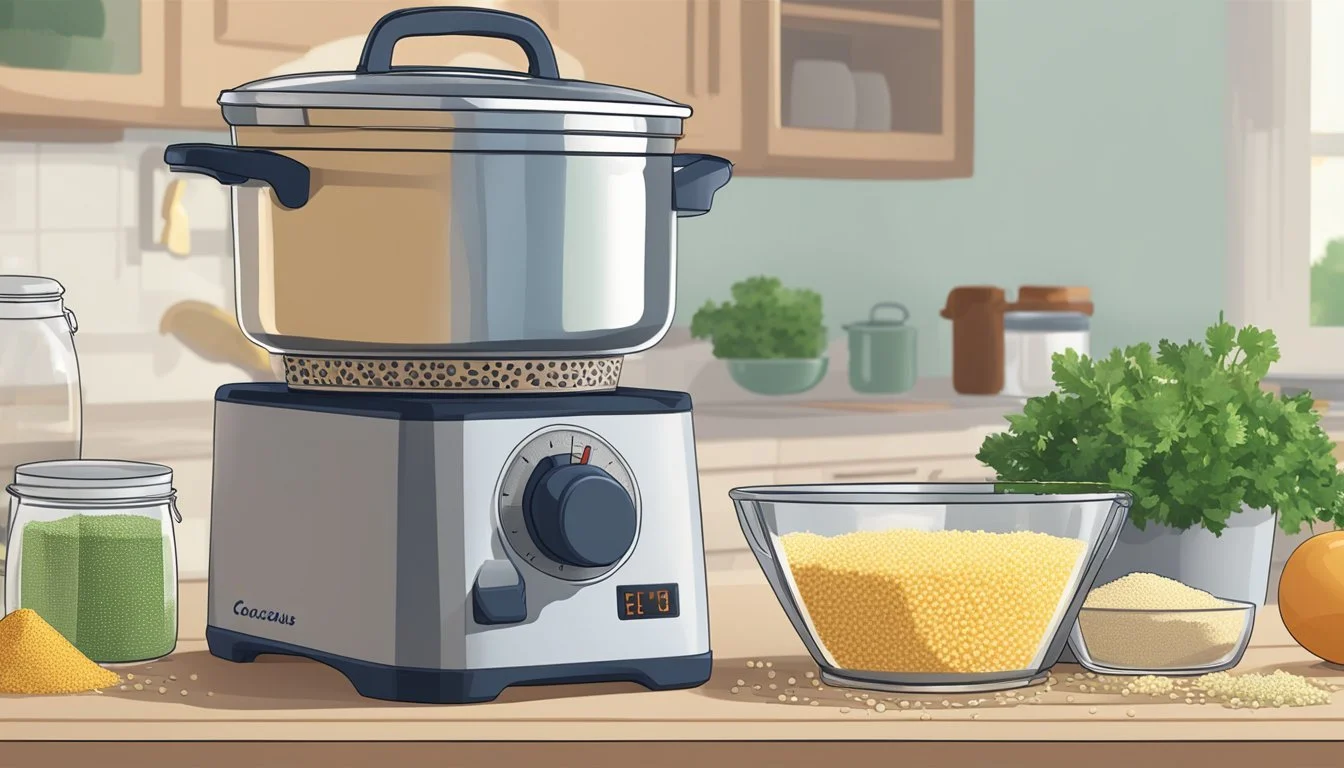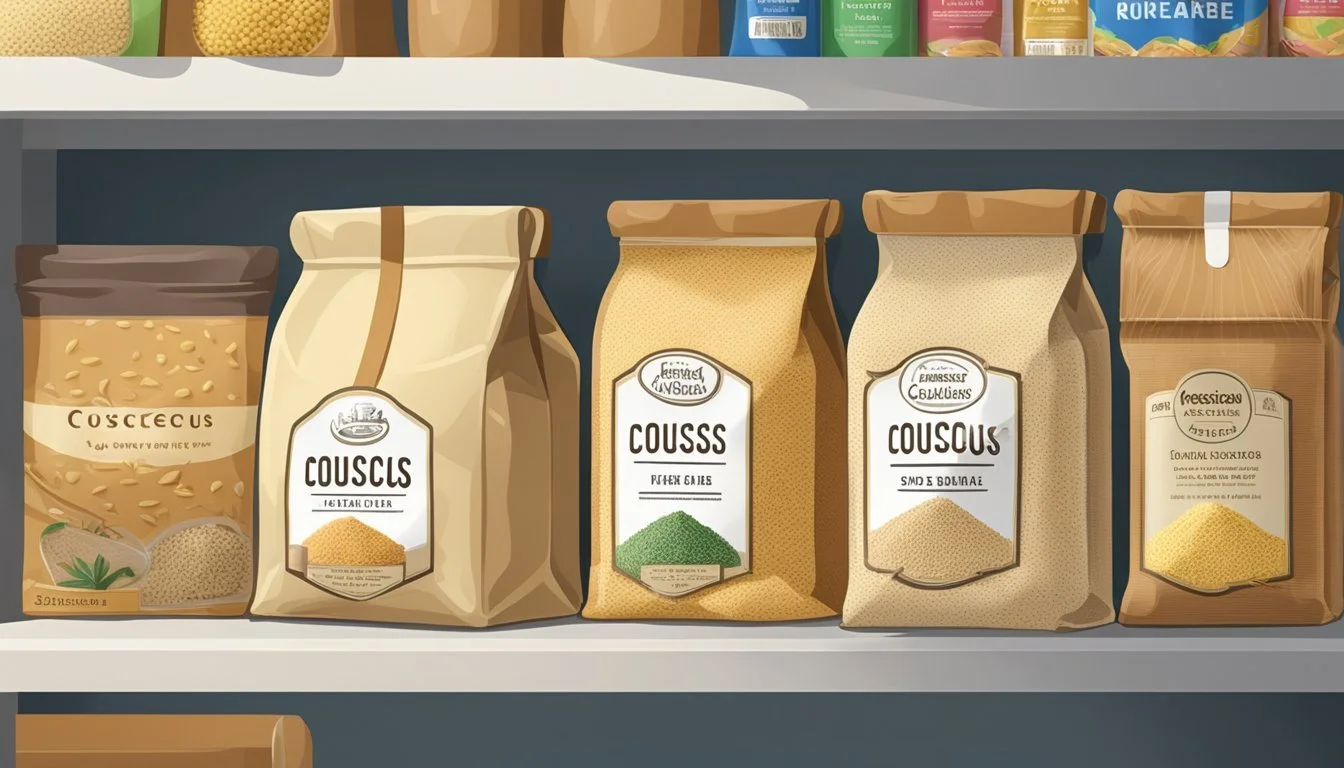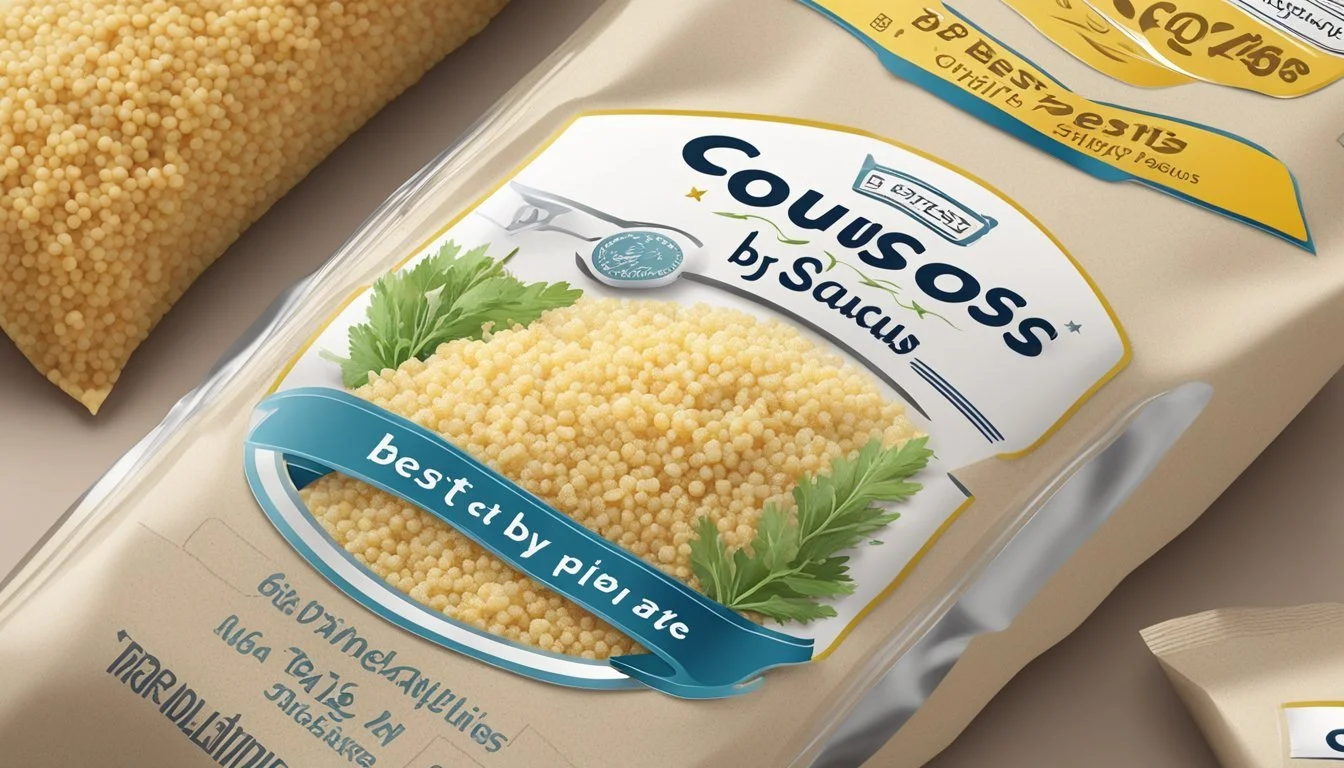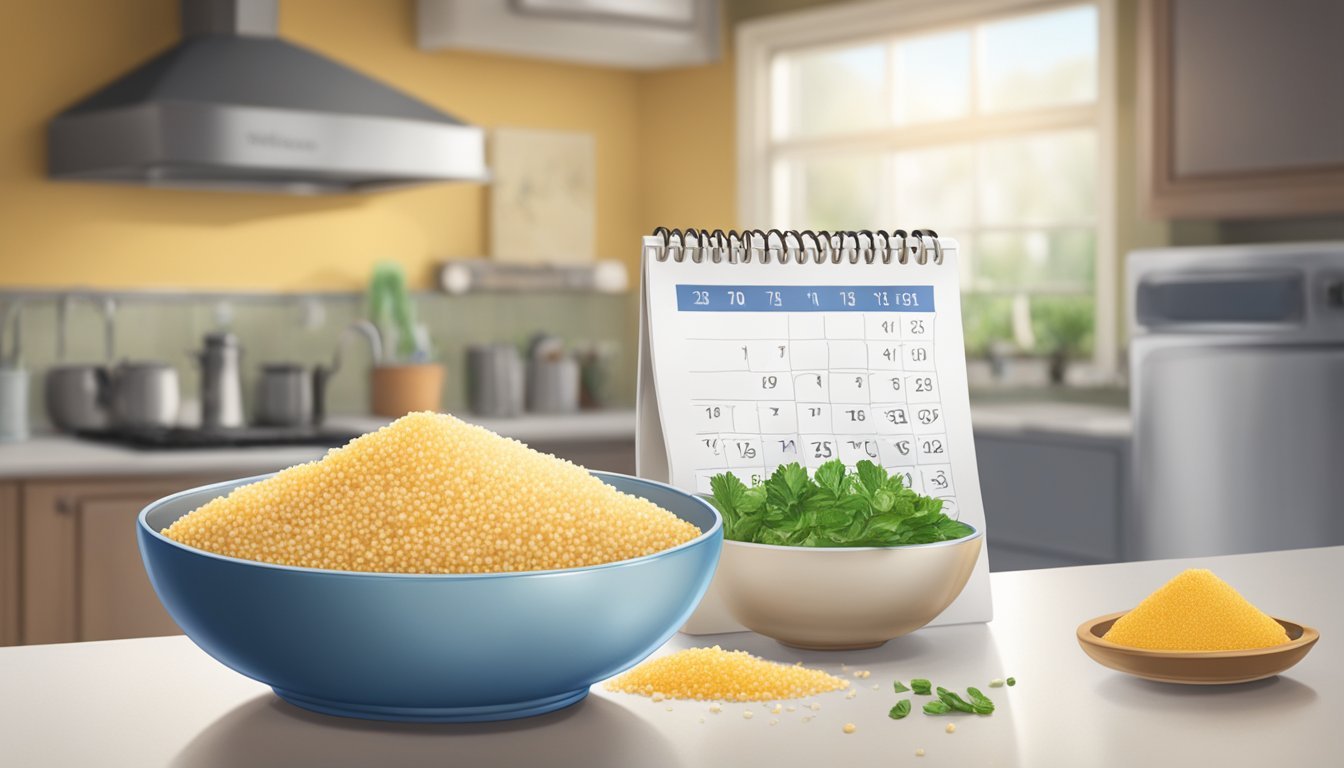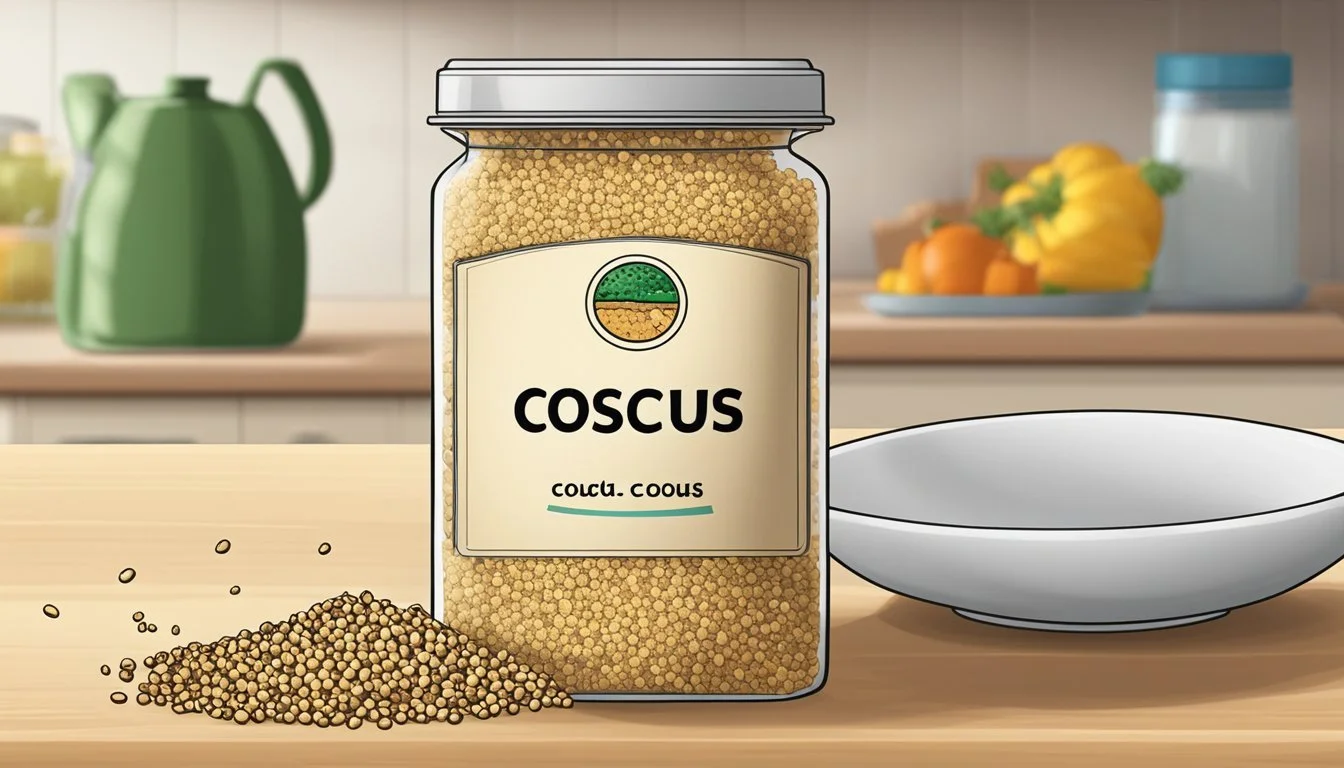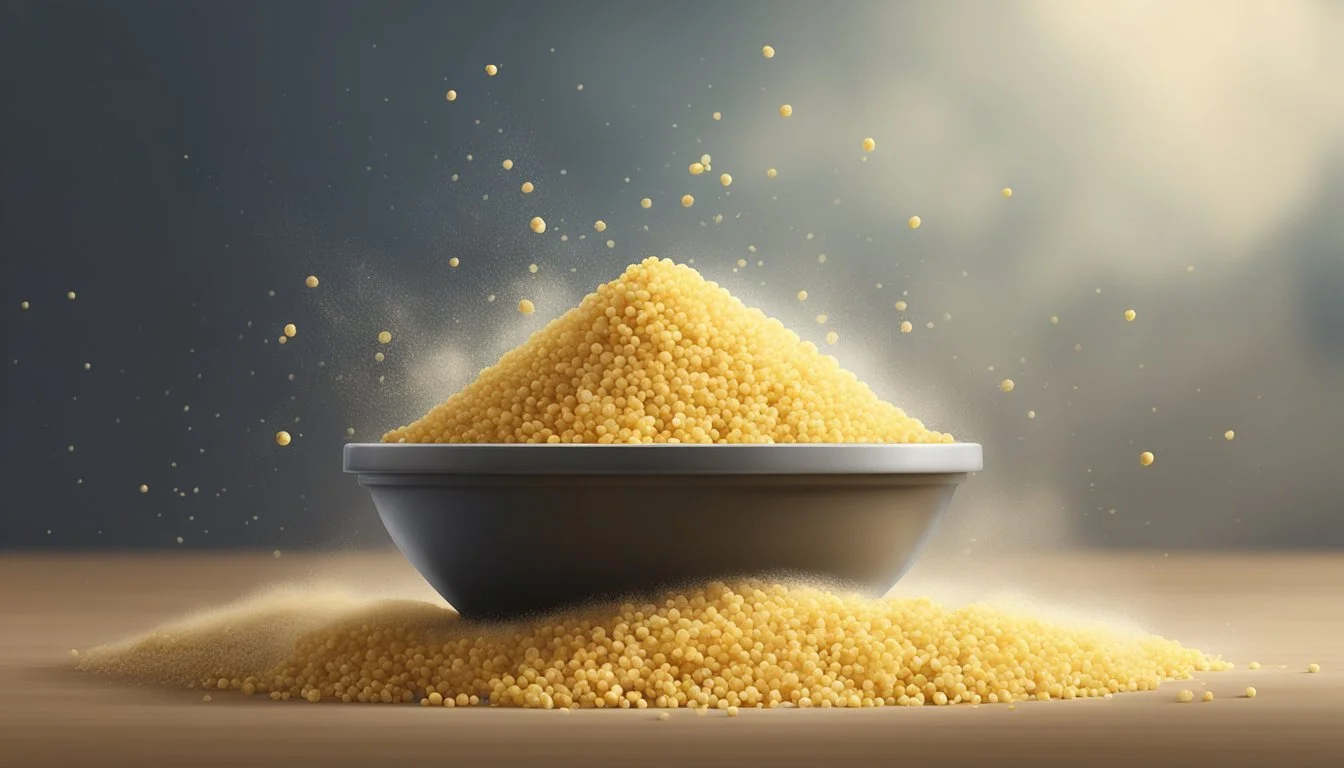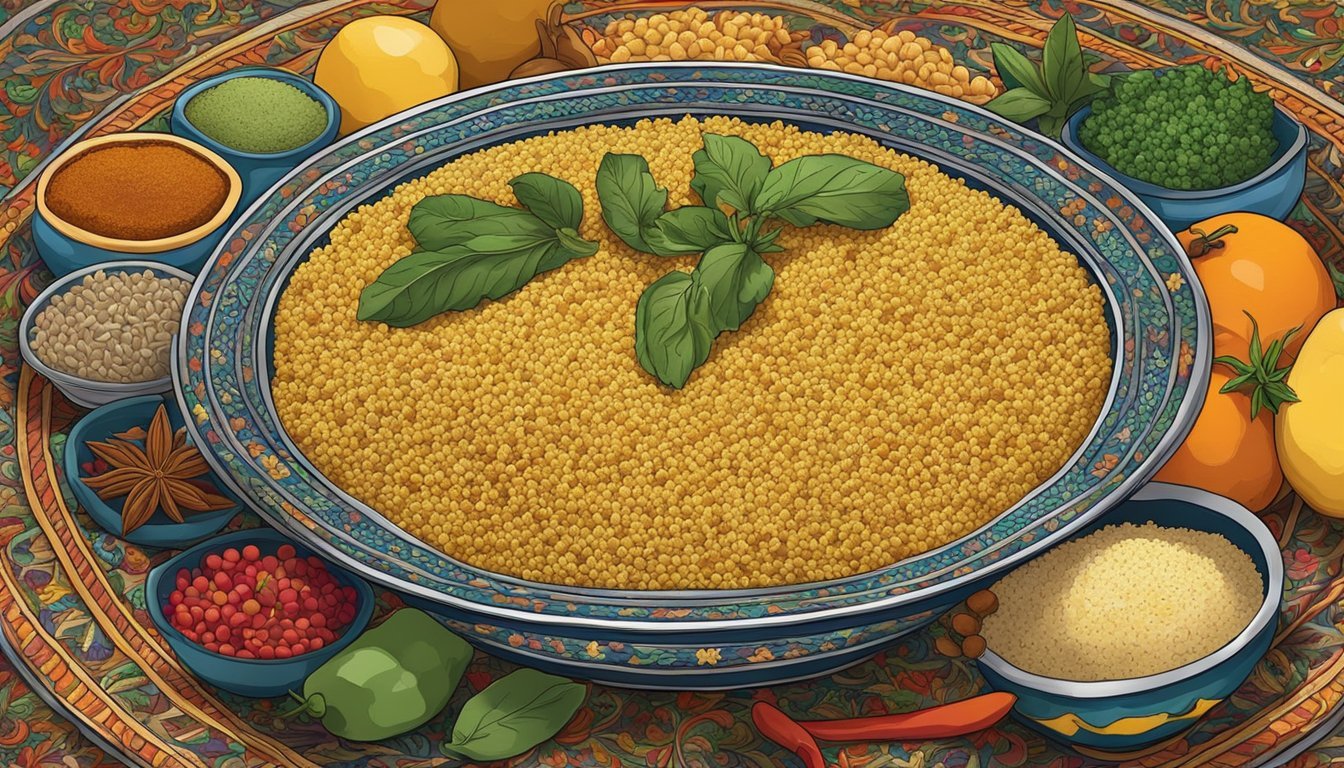How Long Does Couscous Last?
Shelf Life and Storage Tips
Couscous (What wine goes well with couscous?) is a staple food throughout North African countries such as Morocco, where it has sustained populations for centuries. A traditional product of the Berber people, couscous is made from semolina – ground durum wheat – which is moistened and then formed into small granules. Its popularity extends beyond North Africa into Mediterranean cuisines, celebrated for its versatility in dishes.
The nutritional value of couscous makes it a desirable addition to meals, offering protein, dietary fiber, and various vitamins and minerals. Its preparation is straightforward, involving the steaming of dried granules which then fluff up to provide a light and satisfying base for sauces, vegetables, or proteins.
Many consumers are curious about the longevity of couscous in their pantry. Since couscous is a dried food product, its shelf life is relatively long when proper storage conditions are met. Uncooked couscous can last for years if stored in a cool, dry place in an airtight container to prevent moisture and contaminants. Cooked couscous, however, has a shorter shelf life and typically remains safe to consume for a few days when refrigerated properly.
Types of Couscous
Couscous, a staple similar to pasta and originating from North Africa, is primarily made from semolina flour (how long does semolina flour last?). It comes in various forms, catering to different tastes and culinary needs.
Dry Couscous
Dry couscous, the uncooked form, is tiny, granulated durum wheat that needs to be hydrated before consumption. It is known for its long shelf life when kept in a cool, dry place, lasting up to two years if stored properly.
Cooked Couscous
Once hydrated, cooked couscous is fluffy and light, often used as a base for salads and side dishes. Its shelf life decreases significantly after cooking, typically lasting just a few days in the refrigerator.
Instant Couscous
Instant couscous has been pre-steamed and dried for convenience, allowing it to cook more quickly. It requires only boiling water or broth to rehydrate, becoming ready to eat in minutes.
Pearl Couscous
Also known as Israeli couscous, pearl couscous (how long does pearl couscous last?) consists of larger, spherical grains made from wheat flour and semolina. It has a chewier texture compared to smaller varieties and is often used in sides and salads.
Whole Wheat Couscous
Made from whole wheat flour (how long does whole wheat flour last?), this variant offers a higher fiber content and a nuttier flavor. Whole wheat couscous (how long does whole wheat couscous last?) provides a more nutritious alternative to the regular, refined version.
Moroccan Couscous
Moroccan couscous is the smallest in grain size and is a traditional staple in North African cuisine. It is steamed over a stew and absorbs flavors well, making it integral to Moroccan dishes.
Lebanese Couscous
Resembling small pearls, Lebanese couscous, or Moghrabieh, is larger than Moroccan couscous. Its size and shape allow for a different mouthfeel and it is commonly used in Lebanese and Middle Eastern recipes.
Storing Couscous
When it comes to storing couscous, one should keep in mind that this versatile grain's longevity relies on the storage conditions.
Pantry Storage
Dry couscous should be stored in a cool, dry place, such as a pantry or cupboard, away from direct sunlight and heat sources. An airtight container is ideal for prolonging shelf life and thereby ensuring the couscous remains dry and protected from pests or odors. If the original packaging hasn't been opened, it can be used until the expiration date. Once opened, it's best to transfer couscous to an airtight container or resealable plastic bag.
Refrigerator Storage
For cooked couscous, refrigeration is necessary. Place the cooked grains in a sealed container in the fridge to maintain quality. This method of storage keeps cooked couscous fresh for 3 to 5 days. To identify leftovers easily, consider labeling the container with the storage date.
Freezer Storage
If one needs to preserve cooked couscous for a longer period, freezing is an effective option. One should ensure the couscous has cooled completely before transferring it to a freezer-safe, air-tight container or bag. Properly stored, cooked couscous can last in the freezer for up to 3 months. Avoiding moisture and air exposure when freezing is crucial to prevent freezer burn and preserve taste and texture.
Maximizing Freshness
To prolong the shelf life of couscous and maintain its quality, one should focus on proper container use, temperature control, and protection against humidity and pests.
Container Use
Storing couscous in an airtight container is crucial to prevent moisture and oxygen from spoiling the grain. For cooked couscous, removing excess air before sealing the container can further aid in preserving freshness. Dry couscous benefits similarly from airtight containers, keeping it dry and extending its shelf life.
Temperature Control
The ideal temperature for storing cooked couscous is in the fridge at or below 40°F (4°C), which can keep it safe for consumption for 5-7 days. Dry couscous should be kept in a cool, dry place, away from sources of heat that could encourage the growth of spoilage agents or cause the fats within the grain to go rancid.
Humidity and Pests
To safeguard couscous from humidity and pests, one should ensure the storage area is dry and well-sealed. A combination of airtight containers and a cool environment helps to deter bugs and prevent the grain from absorbing moisture, which can lead to mold growth. Regular checks for signs of infestation or spoilage are recommended to ensure the couscous remains consumable.
Shelf Life & Spoilage
The durability of couscous depends greatly on its condition—dry or cooked. Proper storage is crucial to extending its shelf life and preventing spoilage.
Dry Couscous Shelf Life
Dry couscous, when stored correctly, can remain safe to consume for one to two years. The key to maximizing its shelf life lies in keeping it in a cool, dry place such as a pantry. It should be in its original packaging or transferred to an airtight container to shield it from moisture and pests. Manufacturers provide an expiration date, which should be adhered to for optimal freshness.
Cooked Couscous Shelf Life
Once cooked, couscous becomes more perishable. Stored in a sealed container in the refrigerator, cooked couscous can last for 4 to 5 days. Beyond this period, it should be inspected for signs of spoilage before consumption. Adding spices, herbs, or dried fruit (how long does dried fruit last?) to cooked couscous can impact its longevity, as these additions can have their own shelf lives.
Signs of Spoilage
Spoiled couscous, whether dry or cooked, can present several indicators of spoilage. Dry couscous that has become discolored or has visible mold should be discarded. A change in texture or the presence of an unpleasant odor also suggests contamination. Cooked couscous that has an off smell or has become slimy should not be eaten, as it could harbor harmful bacteria. Moreover, couscous that tastes rancid or unusual is no longer safe to consume.
Preparation & Cooking Tips
Proper preparation and reheating of couscous are essential for both taste and food safety. The following tips provide clear guidelines for cooking dry couscous and reheating leftovers to ensure optimal texture and flavor.
Cooking Dry Couscous
To cook dry couscous, one should measure the couscous and cooking liquid – usually water or broth – in a 1:1 ratio. For example, to cook one cup of dry couscous, use one cup of liquid.
Boil the liquid (water or broth for more flavor) on the stove top or in a microwave.
Add a bit of oil or butter, and a pinch of salt for seasoning.
Once boiling, pour the liquid over the dry couscous in a bowl, cover, and let it sit for 5 minutes.
Fluff with a fork to separate grains and incorporate air for a lighter texture.
Optionally, one can add sauces, spices, or herbs after fluffing to enhance the flavor.
Reheating Cooked Couscous
Reheating couscous properly helps maintain its texture and can keep food poisoning at bay by ensuring it is heated thoroughly.
To reheat couscous on the stovetop:
Place the couscous in a pan with a small amount of water or broth.
Warm over low heat, stirring occasionally to prevent sticking or burning.
Once heated through, remove from the stove, and serve immediately.
For the microwave:
Place couscous in a microwave-safe dish, adding a little water or broth to keep it moist.
Cover the dish with a lid or a microwave-safe cover to trap steam.
Heat on high for 1-2 minutes, then stir. If it's not heated evenly, heat for additional 30-second intervals, stirring in between.
When reheating, if the couscous appears dry, one can add a bit more liquid to restore moisture. However, when dealing with leftovers, always ensure they've not been at room temperature for over two hours to prevent food poisoning.
Couscous in Recipes
Couscous serves as a versatile ingredient that can be incorporated into a variety of dishes, ranging from light salads to hearty main courses. Its ability to absorb flavors makes it an ideal canvas for a range of spices, herbs, and sauces.
Salads and Sides
Couscous salad is a popular dish that often includes a medley of herbs, spices, and dried fruit, contributing to its vibrant taste and texture. For a refreshing side, a simple couscous salad might combine the grain with lemon juice, olive oil, chopped parsley, and mint, along with diced cucumber and cherry tomatoes. Texture plays a crucial role here: couscous should not be gritty but light and fluffy to complement the crispness of the vegetables.
Ingredients:
Couscous
Fresh herbs (parsley, mint)
Olive oil & Lemon juice
Diced cucumber & Cherry tomatoes
Salt to taste
Main Dishes
In main dishes, couscous often acts as a bed for richly flavored stews and meats. It absorbs the sauces and juices, enhancing the overall taste of the meal. Leftover couscous can be repurposed into these main courses, ensuring that nothing is wasted and the unique texture of couscous is preserved. A popular combination might include couscous with a tagine, wherein the spices like cumin and cinnamon elevate the dish's flavor profile.
Suggested Pairing:
Couscous with Moroccan tagine
Key spices: Cumin, Cinnamon
Suggested sauce: Tomato-based
The preparation of couscous in these contexts should maintain its distinct attributes — a neutral flavor that carries the taste of the accompanying ingredients while contributing a satisfying but not overpowering texture.
Health and Nutrition
Couscous is a grain product that serves as a source of several nutrients, making it a beneficial item in a balanced diet. Protein and fiber are two essential compounds available in couscous, contributing to muscle maintenance and digestive health respectively.
A typical one-cup serving of cooked couscous might provide approximately:
6 grams of protein: Essential for building and repairing tissues.
2 grams of fiber: Supports digestive health and may help with weight management.
As for its nutritional value, couscous, especially when made from whole wheat, can offer more nutritional benefits. Whole wheat couscous is richer in nutrients than its refined counterpart because it contains the whole grain, including the bran, germ, and endosperm.
In terms of health benefits, couscous can contribute positively to one's daily diet. It can be particularly beneficial because it:
Sustains energy levels with its carbohydrate content.
May aid in managing a healthy weight by promoting a feeling of fullness.
Provides essential vitamins and minerals, such as selenium, vitamin B5, and folate.
When incorporating couscous into meals, choosing whole wheat options maximizes its health potential due to the higher nutritional content, including increased fiber, vitamins, and minerals. This grain can be a versatile and healthful component of many diets, offering a foundation for a plethora of nutrient-rich meals.
If you're looking for couscous, buying it online is your best bet!
Best Practices for Labeling and Dating
When storing couscous, one should always adhere to certain labeling and dating practices to ensure maximum freshness and to keep track of the storage time. Labeling and dating are essential components of food storage that can help prevent food waste and ensure safety.
Labeling: Start by clearly labeling the container with the contents. Use permanent markers or pre-printed labels that resist smudging and fading.
Expiration Date: Note the manufacturer's expiration date if transferring couscous from its original packaging to a new container. Additionally, when cooking couscous, one should label it with the date of cooking.
Date: For homemade couscous, it's vital to record the date it was prepared. This date is crucial in determining its shelf life.
Labeling and Dating Practices:
Use a consistent format for dates. For example: DD/MM/YYYY.
Position the label on the container's front, making it easily visible.
Storage Time:
Uncooked couscous: up to 1-2 years in a cool, dry place.
Cooked couscous: several days in the refrigerator, up to 1 month in the freezer.
Here is a simple table to indicate proper storage times:
Couscous Type Pantry (Uncooked) Fridge (Cooked) Freezer (Cooked) Storage Time Up to 2 years 3-5 days Up to 1 month
By adhering to these best practices for labeling and dating, one can ensure that couscous remains fresh and safe for consumption within its expected shelf life.
Avoid the crowds and shop for food labels online from the comfort of your home!
Freezing Couscous
Freezing couscous is an effective method to extend its shelf life significantly. It ensures that cooked couscous maintains its quality for future use when properly stored.
How to Freeze Couscous
To freeze couscous, one should allow the cooked couscous to cool completely after cooking. This prevents condensation and ice crystal formation, which can affect texture upon thawing. Transfer the cooled couscous into airtight containers or heavy-duty freezer bags. Label the container with the date of freezing to help keep track of the storage time.
Cooling: Ensure couscous is at room temperature.
Packaging: Use airtight containers or heavy-duty freezer bags.
Labeling: Mark with date before placing in the freezer.
Defrosting and Reusing Couscous
When it comes to defrosting frozen couscous, transferring it from the freezer to the refrigerator for several hours or overnight is recommended. This allows for a gradual thawing process that helps maintain the couscous's texture. Once defrosted, reheat couscous by sprinkling a little water over it and warming it in the microwave or on the stovetop until it is hot throughout.
Refrigerator Thawing: Allow couscous to thaw slowly in the refrigerator.
Reheating: Microwave or stovetop with a sprinkle of water.
Before freezing, it's critical to ensure that the couscous is divided into appropriate portion sizes. This aids in defrosting only the amount needed and maintaining optimal quality. When properly stored in the freezer, couscous can last for up to 6 months.
Avoiding Food Waste
To reduce food waste associated with couscous, consumers should pay close attention to storage methods and timelines. Properly stored couscous can last up to two years if kept in a cool, dry place. It's crucial to note the expiration date on the package to ensure freshness and minimize the risk of spoilage or food poisoning.
Couscous should be kept in its original packaging until ready to use, or transferred to an airtight container to guard against moisture and pests. Leftovers, once cooked, must be stored appropriately to extend their usability. Here are recommendations for maximizing the storage time of both uncooked and cooked couscous:
Uncooked Couscous:
Store in a cool, dry cupboard or pantry.
Keep in an airtight container after opening.
Use within the recommended period (typically two years).
Cooked Couscous:
Seal in airtight containers before refrigerating.
Consume leftovers within 4 to 5 days to prevent spoilage.
By closely monitoring the condition of couscous — checking for off-odors or texture changes — and by following proper storage guidelines, consumers can responsibly enjoy this versatile grain without contributing unnecessarily to food waste.
Make your life easier by ordering airtight containers online; it's just a few clicks away!
Alternative Uses for Expired Couscous
Reuse in the Kitchen: Even though couscous might be past its prime, it can be revitalized for culinary applications. If it doesn't exhibit signs of spoilage such as a bad smell, an unusual taste, or discoloration, expired couscous can be incorporated into creative recipes. For instance, create a textured addition to meatloaf or as a replacement for breadcrumbs in casseroles.
Craft and Educational Projects: Expired couscous can become an affordable supply for arts and crafts. Teachers and parents may use it for sensory bins for children, where they can explore textures and practice fine motor skills. Additionally, couscous can be dyed and used in art projects as a way to add texture to paintings or mosaics.
Gardening Uses: In the garden, couscous can serve a new role. As a biodegradable material, it can be added to compost bins, contributing to a nutritious compost mix. This will eventually enrich garden soil, aiding in plant growth. Remember, composting couscous should only be done if it's free from oils or sauces that might attract pests.
Household Hacks: One can find household uses for expired couscous as well. Place it in sachets as a natural dehumidifier for small spaces or use it as a filler for homemade draft stoppers or pin cushions.
It's always important to assess the condition of the expired couscous for any potential spoilage before deciding on its alternative use.
History and Cultural Significance
Couscous, a staple food in North Africa, boasts a long-standing history deeply rooted in Berber traditions. This granular semolina dish has been the cornerstone of North African cuisine for centuries. It is a reflection of the region's agricultural practices and culinary ingenuity.
The Berbers, indigenous people of North Africa, are credited with the origination of couscous, a dish that has sustained them through the ages. Couscous is more than a meal; it is a cultural artifact, symbolizing community and hospitality in societies from Morocco to the Mediterranean basin.
The cultural significance of couscous is evident in its social context. In many North African communities, the preparation of couscous is a communal activity that strengthens family and societal bonds. Traditionally, families gather to prepare the dish, especially during significant events and festivals which underscores its role in maintaining cultural heritage.
Historical significance is also noted in the way couscous spread across regions, from rural areas where it was a sustenance food to becoming a beloved dish in urban Mediterranean cities. It showcases the adaptability and resilience of local customs as they intersect with various cultural influences.
Region Cultural Importance North Africa Staple food, symbol of Berber heritage Morocco Integral to social gatherings and festivals Mediterranean Reflects the blend of different cultures
While couscous's exact historical timelines are hazy, its resilience in the face of cultural shifts and its continued prominence on the dinner table highlights its enduring legacy across generations and cuisines.



